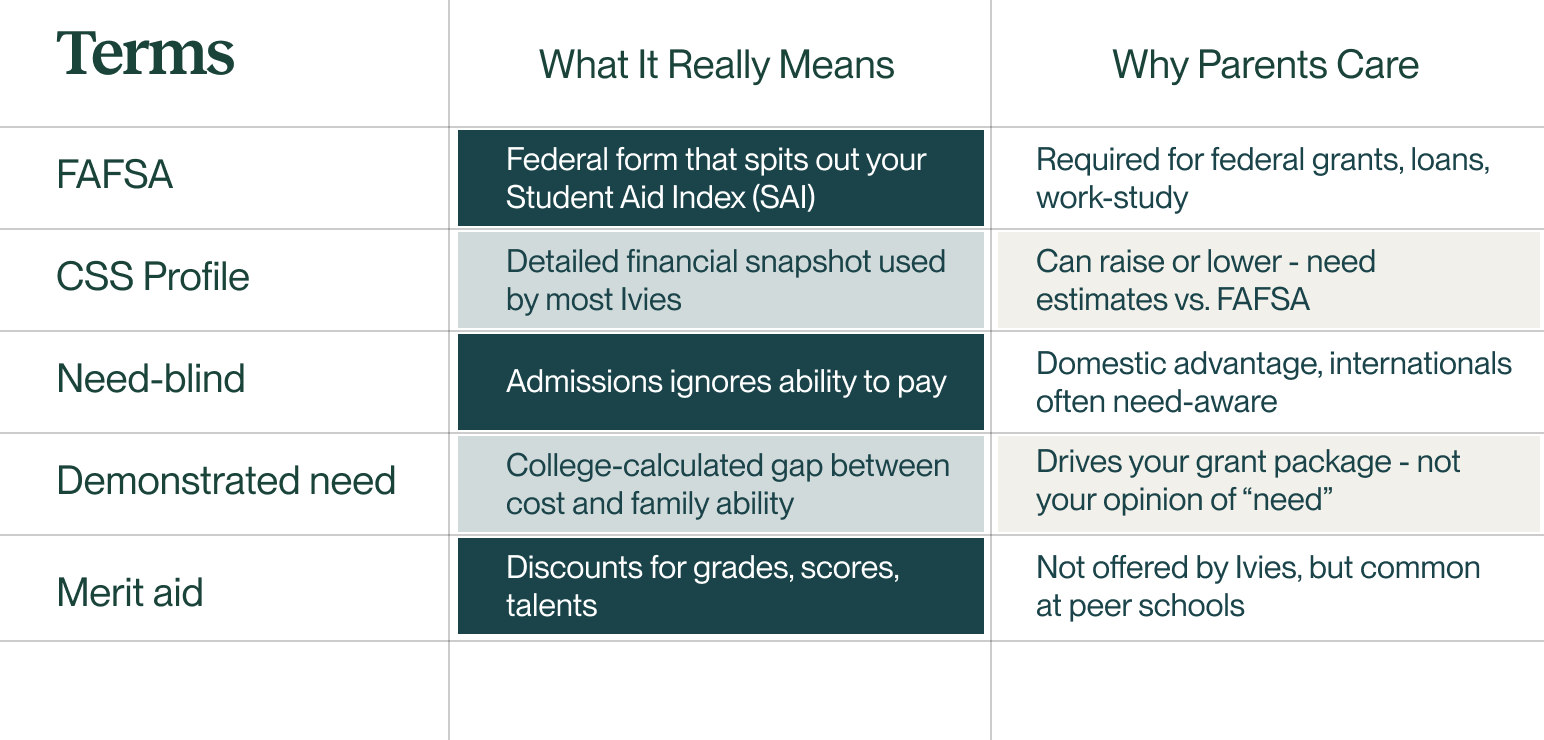
Financial Fit meets Dream School
Need-based aid, merit awards, and Ivy policies—decoded
.png)
1. Ivy League Aid in One Sentence
Ivies are need-blind for U.S. applicants, offer zero merit scholarships, and promise to cover 100 % of demonstrated need.
2. Key Terms, No Fluff

3. The Ivy League Funding Formula
Cost of Attendance – SAI (via FAFSA/CSS) = Demonstrated Need
Ivies commit to meet that number with grants, campus jobs, and capped loans (or loan-free at some schools).
4. Four Parent Moves to Maximize Aid
- Run Net Price Calculators (NPC)—one per Ivy on your list—before junior-year course selection.
- Shift Savings Strategy—3–4 years out, move student-held assets to parent accounts; FAFSA assesses them at 20 % vs. 5.6 %.
- Time One-Off Income—bonus or stock sale? Push it outside the “base year” (January 1 of sophomore spring to December 31 of junior fall).
- Stack Outside Scholarships Early—Ivies may reduce institutional grants dollar-for-dollar; aim to win funds for “unmet need” items (travel, books) before aid packages finalize.
5. Merit-Aid Work-around
Target “Ivy-adjacent” schools—Duke, Vanderbilt, USC, Northeastern, etc.—that do court high-achievers with $20 k–$50 k annual awards. Apply early, leverage offers as financial safety nets.
6. Quick “Aid Readiness” Checklist
- Completed FAFSA & CSS on Oct 1 launch day (earlier = bigger state aid pool)
- Pulled prior-prior tax returns + W-2s in PDF form
- Listed at least one financial safety school with automatic merit awards
- Scheduled appeal window (April) to compare and negotiate packages
Bottom line:
Ivies reward need, not numbers. Know the formulas, prep finances early, and you can let your student chase the dream school—without blind-siding the family budget.
%202.png)
.png)
.png)
.png)